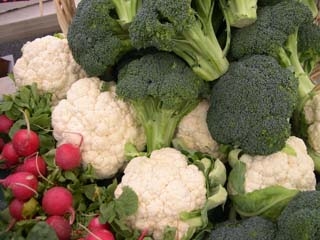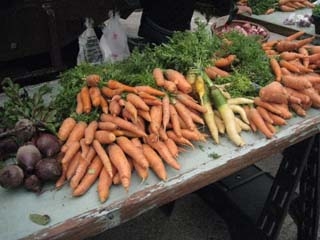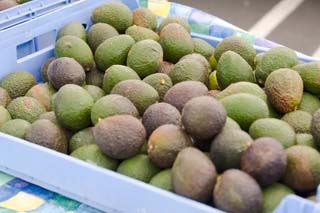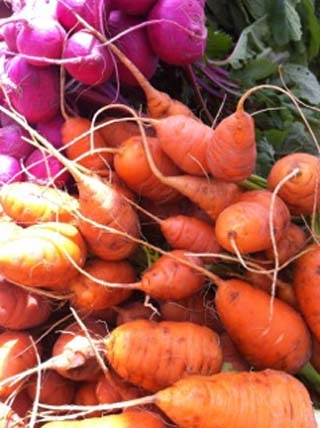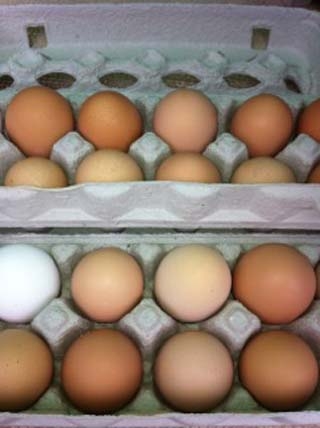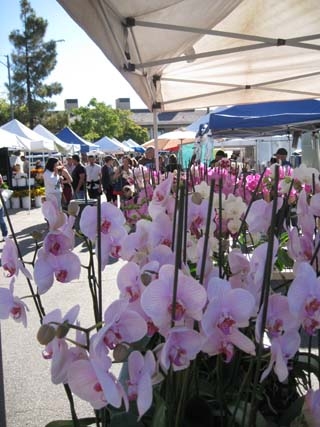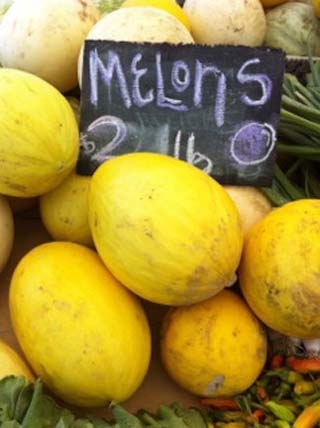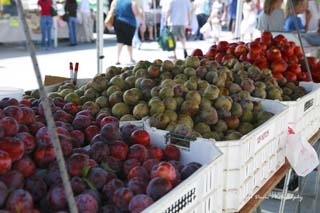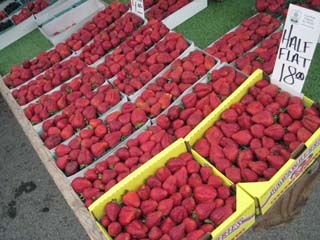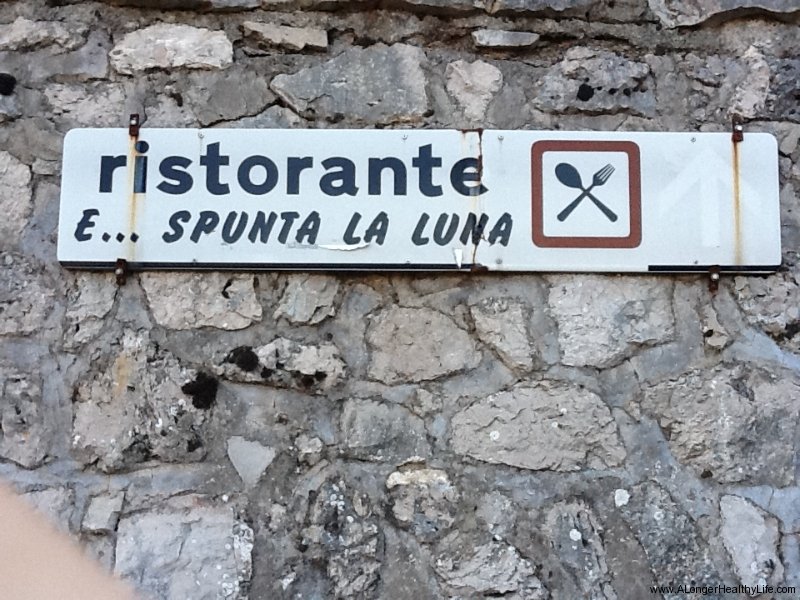In Sardinia they…
Eat a lean, low glycaemic index, plant-based diet centred around vegetables, legumes and whole grains with small amounts of cheese and occasional lean meat.
They have a saying, ‘simple cuisine makes a home great.’ The food is rustic, but it is made from top quality ingredients which marry well together and always tastes good.
What we can do:
- Eating healthily does not mean sacrificing flavor. Using top quality ingredients with meat as an accent rather than the focus creates appetizing food you cannot fail to enjoy.
In Sardinia they…
Grow their own organic vegetables wherever they can, be it a field, an allotment, or just a small patch of land. Every household grows what they can and swaps produce with neighbors if they need more variety. Eggplant, broad beans, green beans, onions, garlic, tomatoes, zucchini, artichokes, fennel, potatoes, capers, olives, and herbs such as parsley and mint are all on the regular menu. Vegetables are eaten in sauces, salads and soup or with pasta or meat dishes.
What we can do:
- Eat a wide range of fresh, local, seasonal and preferably organic produce from wherever we can get it. Use recipe books and some of our AKEA recipes to find simple yet tasty ways of preparing vegetables and salads so that they can be enjoyed by all the family.
In Sardinia they…
Grow grapes which are particularly high in antioxidants as a result of the hot sun, which gives them extra red pigment. The resulting wine, called Cannonau, is particularly high in antioxidants. Known as vino nero due to its extra-dark color, it is drunk in the evening in moderation – about a quarter of a bottle – with a meal.
What we can do:
- Good news! Cannonau is available from wine suppliers in the West. If you want to drink red wine, choose Cannonau or another high-antioxidant red wine such as New Zealand Pinot Noir and drink in moderation with a meal.
In Sardinia they…
Make their own bread and pasta from whole wheat flour. Bread is made the old-fashioned way, slowly leavened using for the fermenting process a ‘mother dough’, saved from the last batch, which contains beneficial bacteria.
Pistoccu bread is made with barley or bran flour and potatoes, whilst carta da musica, so-called because of its similarity to ancient Sardinian music parchment, is a paper-thin crunchy bread a little like a poppadom, useful for shepherds as it lasts for up to a year.
What we can do:
- Use sourdough rye and traditionally-leavened whole grain breads which are fermented slowly and provide us with beneficial bacteria which keep our guts healthy and enhance the digestive process. These types of bread are much better for health than modern fast-rising loaves which use industrial yeast and chemical enhancers and additives.
In Sardinia they…
Surprisingly, they don’t eat a lot of fish, at least not in this mountainous Longevity Hot Spot. We can only speculate on what would happen to Sardinian longevity if they ate fish regularly – would they attain Okinawan heights of centenarianism?
When Sardinians do eat fish, they enjoy bottarga – sun-dried flattened fish roe which is grated onto pasta dishes or sliced and eaten. Fresh sardines are cooked with garlic, tomato, olives, capers, parsley and olive oil, and clams are added to sa fregula – a soup made with saffron and a small type of pasta called fregula. Seafood casserole, stuffed anchovies, stuffed squid, and shark steak with walnuts and pine nuts also comprise some of the fishy fare in Sardinia.
What we can do:
- Fish is high in protein, and oily fish such as sardines, anchovies and mackerel contain beneficial omega 3 fats, so enjoy them regularly.
In Sardinia they…
Add legumes such as chick peas and fava beans to soups, pasta dishes and vegetable dishes. A favorite Sardinian recipe is fava beans with spinach and ham.
What we can do:
- Beans are full of fiber, protein, B vitamins and minerals and are versatile and easy to use. Add to salads, soups, casseroles, roast vegetables or eat re-fried style with a slice of toasted sourdough rye dipped in olive oil.
In Sardinia they…
Regularly eat nuts, walnuts and almonds from their own nut trees, which they keep fit by climbing. Sometimes they use nuts to make papassini – cookies made with raisins, almonds and jam made from cooked wine.
What we can do:
- Nuts are rich in vitamin E and plant sterols which are cardioprotective – research suggests that a handful around four times weekly can add up to two years to your life. They are also an excellent source of vegetarian protein. Eat as a snack on their own to prevent mid-afternoon slumps, have them with crudités before dinner, or use in vegan and vegetarian recipes. Keeping a bowl of nuts in their shells on the table along with a good nut cracker is an excellent way of getting kids to eat them.
In Sardinia they…
Eat pecorino cheese made from sheep’s milk, either stagionata (aged) or fresh. Pecorino has a strong flavor and is grated onto pasta and other dishes in small amounts much in the way that parmesan is used in the rest of Italy.
The sheep and goats in Barbagia feed on grass, which gives their cheese and milk some omega 3 essential fatty acids, which are anti-inflammatory and help prevent cancer and heart disease. Goats also eat a plant called Sardinian dwarf curry which contains an anti-inflammatory substance, arzanol, which gets into their milk. Arzanol is currently being explored by pharmaceuticals companies as a drug for AIDS.
Milk in Barbagia is unpasteurized and therefore more digestible than our industrialized milk, and the cheese is fermented with beneficial bacteria.
What we can do:
- Use organic cheese, including that from goats’ and sheep’s milk, which has been traditionally fermented (rather than processed). Using good quality cheese with a strong flavor means we only have to use a small amount to flavor dishes – cheese is high in pro-inflammatory saturated fat and should not be eaten in large quantities.
In Sardinia they…
Are shepherds in the Barbagian region, and they enjoy eating lamb, beef, goat meat, ham and salsiccia sarda, a pork sausage made with herbs and spices. However, meat is not available in large quantities, so it is only eaten once a week or less, usually boiled, and sometimes roasted for festivals. A single cow is likely to be butchered and lived off by two or more families for an entire season. The meat is, of course, lean, free range and organic, and contains omega 3 fatty acids because the animals it comes from are fed on wild grasses.
What we can do:
- Eat good quality, lean, organic meat in moderate amounts and avoid eating it too often. The meat may be more expensive, but it can be really relished this way and you may end up spending less by eating it more rarely.
In Sardinia they…
Use raw honey rather than sugar to sweeten food, for example in sebadas, a dessert made from cheese and raw honey fried in a pastry envelope, eaten on special occasions.
What we can do:
- Use raw honey rather than sugar to sweeten desserts and baking. It is a natural substance and even has some health benefits, unlike sugar which is toxic to the body.
In Sardinia they…
Use olive oil and eat olives from their olive trees. They also use mastic oil, from a tree related to the pistachio tree, which has antibacterial and antimutagenic properties.
What we can do:
- Use extra virgin olive oil in cooking and salad dressings. Olive oil is rich in vitamin E and beneficial oleic acid.
In Sardinia they…
Drink water from clear mountain springs.
What we can do:
- Drink plenty of water, sipped throughout the day – use either mineral water or filtered.


